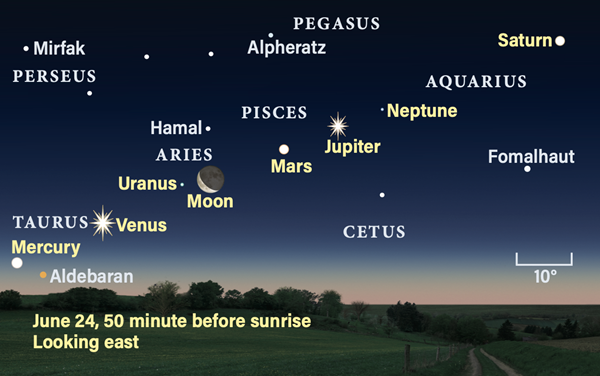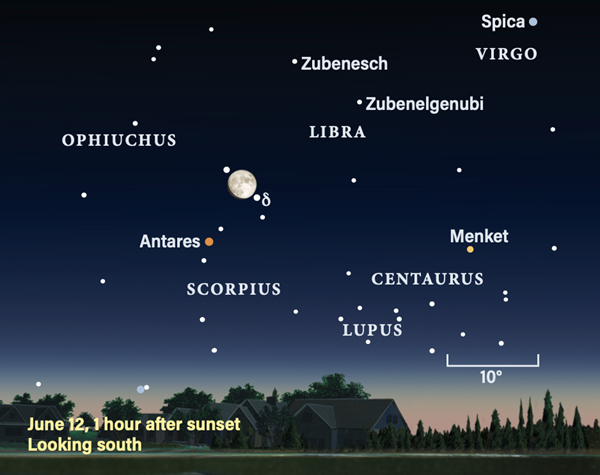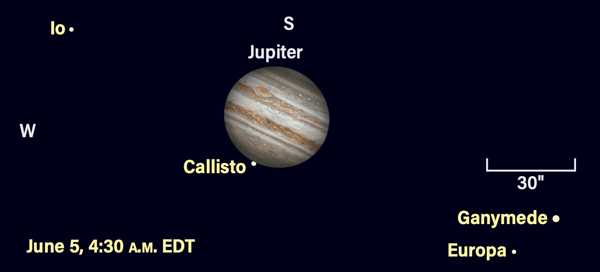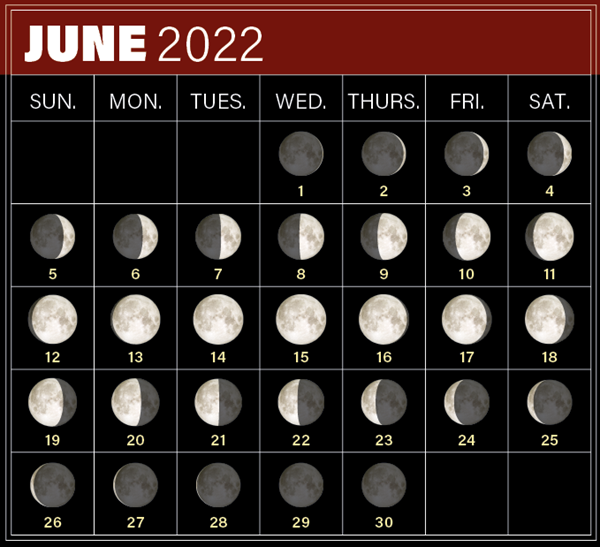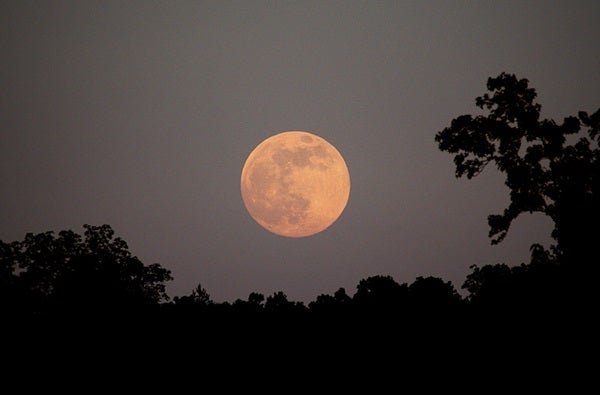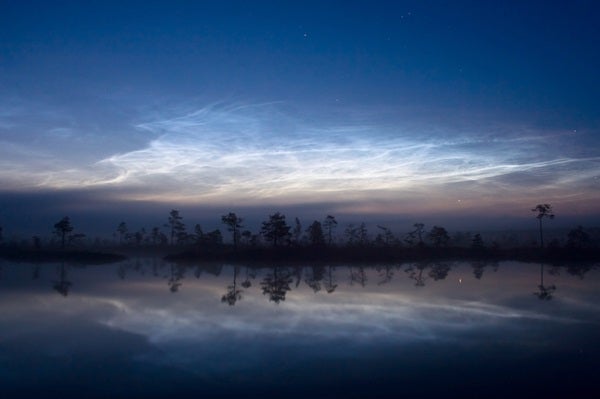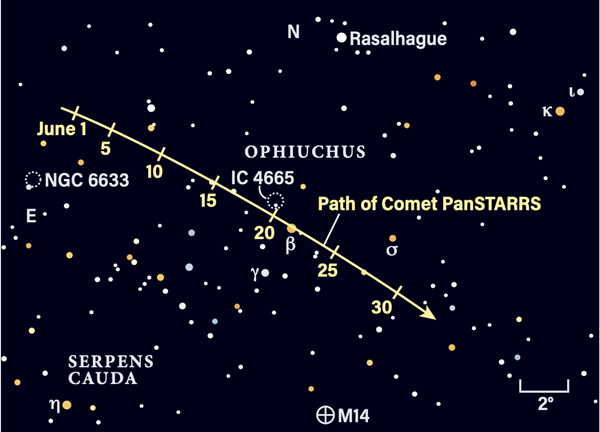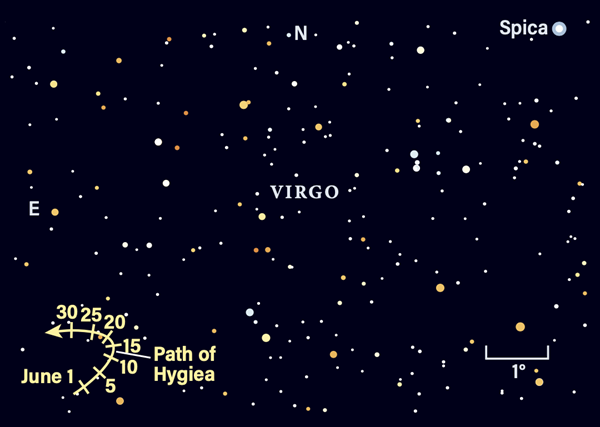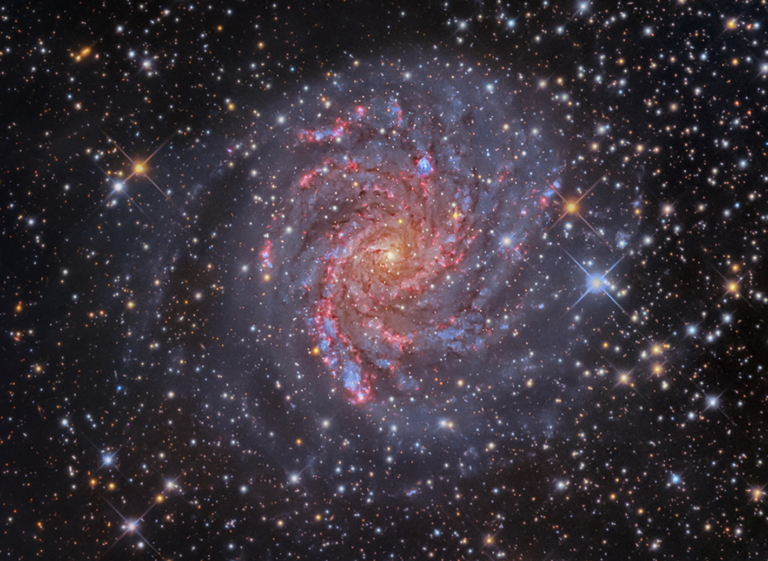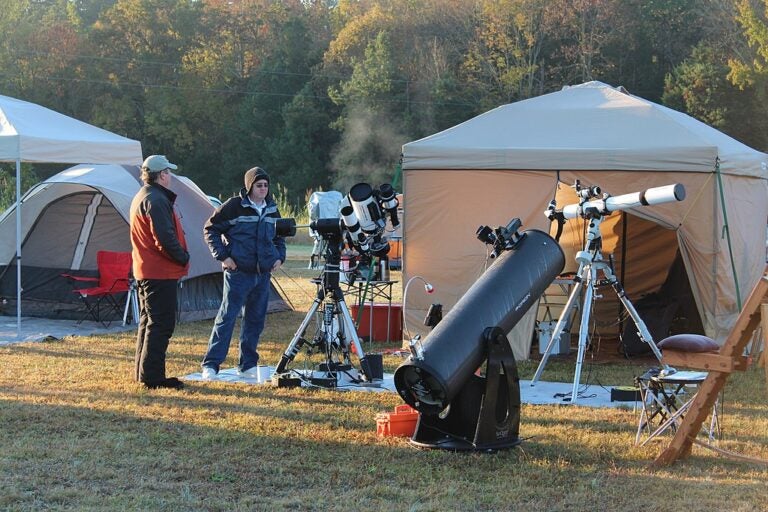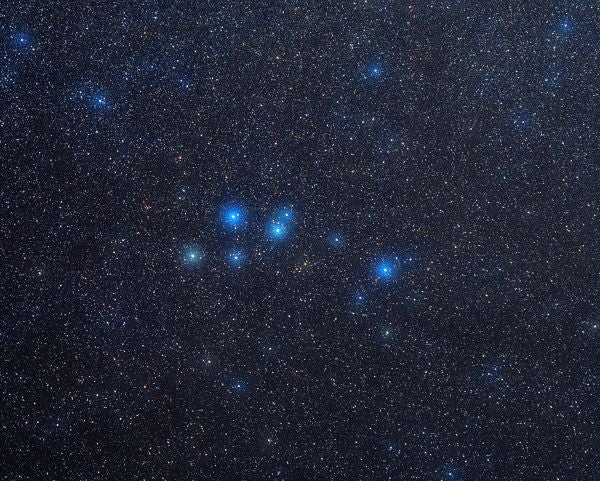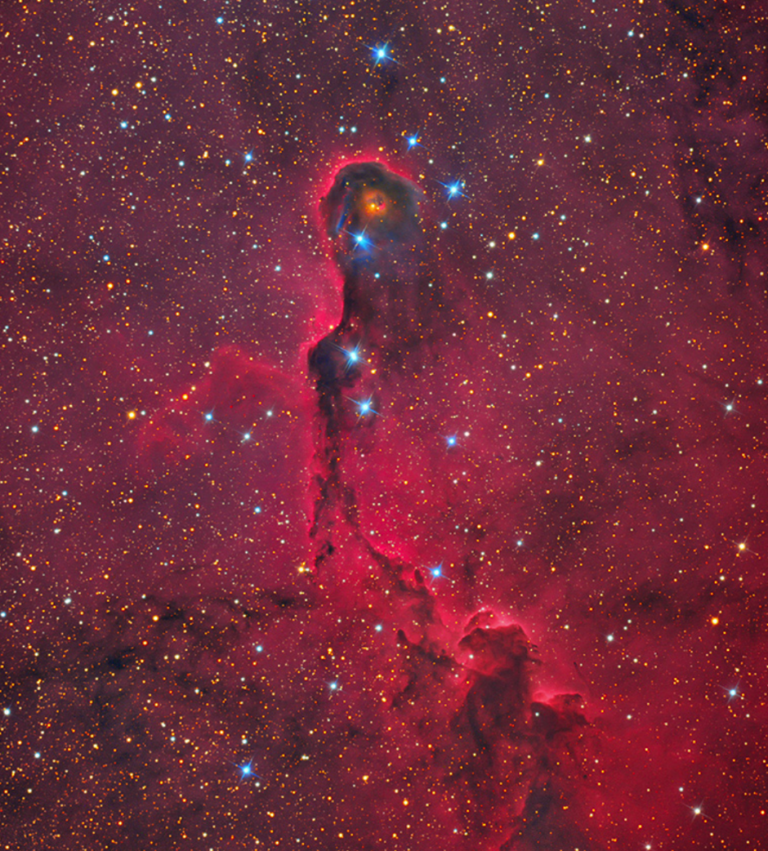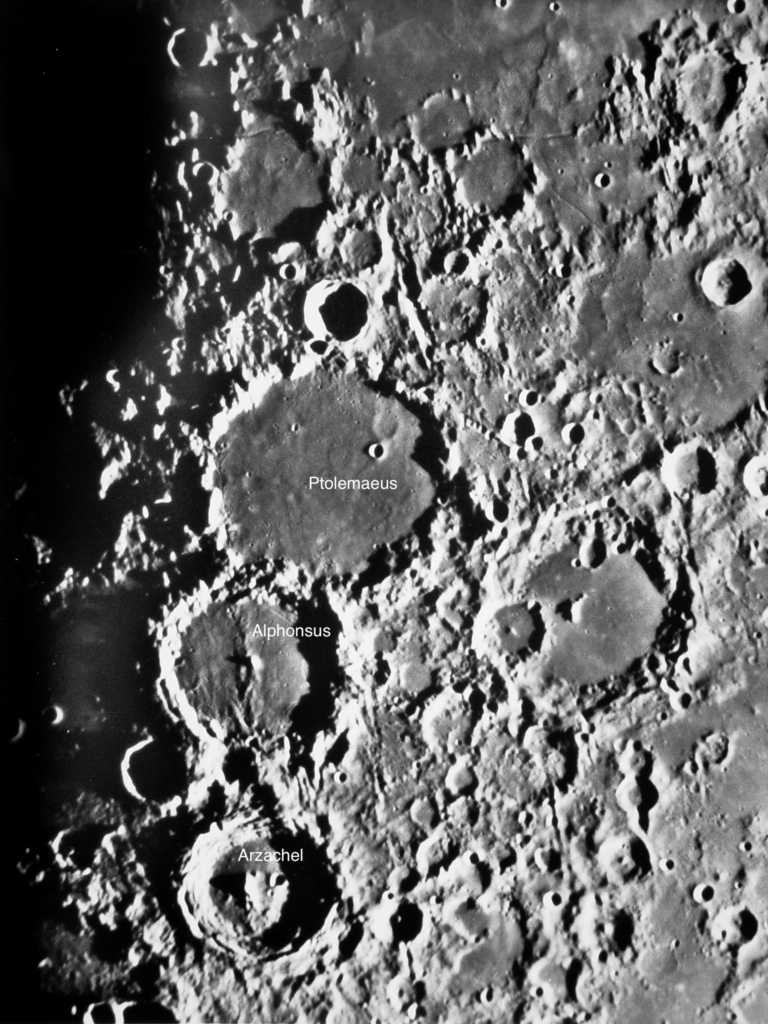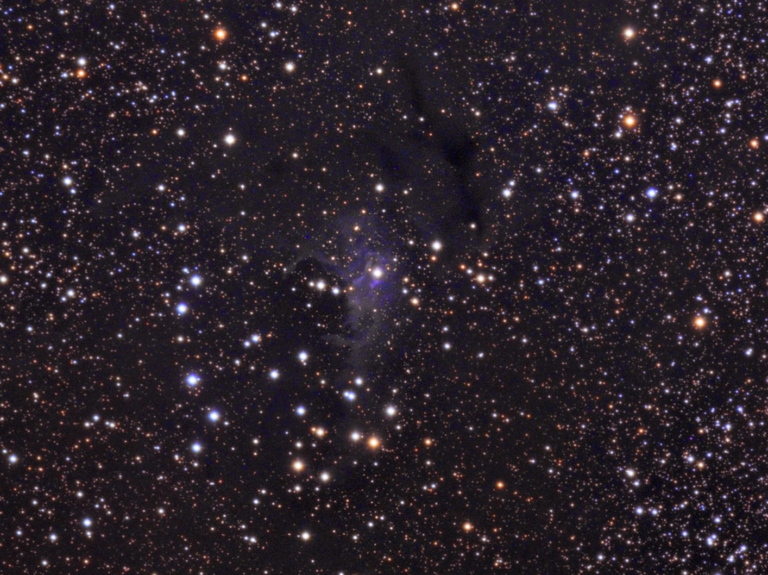All seven major planets congregate in the morning sky — yes, all seven! The five naked-eye planets line up in order of distance from the Sun, stretched along the ecliptic. The Moon joins in later this month. The morning spectacular is perfectly situated for hours of remarkable telescopic views, beginning when Saturn rises soon before midnight in late June. Within a span of just over 90°, you can spy the rings of Saturn, the atmospheric belts and the Galilean moons of Jupiter, the rusty surface of Mars, the phase of Venus — and a fleeting glimpse of Mercury.
Instead of our usual start in the evening sky, we’ll jump right into the main event and later discuss each planet as it rises throughout the night.
The presence of all seven planets in the morning sky is a relatively rare sight. Of course, following last year’s conjunction of Jupiter and Saturn, the fact that the other planets gather near them is not that unusual.
On June 24, the five classical planets and a crescent Moon span the eastern sky in order of distance from the Sun: Mercury, Venus, the Moon, Mars, Jupiter, and Saturn. All are visible to the naked eye.
Uranus and Neptune are also in the mix. Both can be observed in binoculars or with a small telescope before the onset of twilight. Uranus stands 6° east of the Moon that morning, shining at magnitude 5.9 in Aries the Ram. Neptune is in western Pisces, 11.5° west of Jupiter and magnitude 7.8.
The planets are spread along a 106° swath of the ecliptic. Mercury is last to rise, shortly before 4:30 A.M. local time, allowing for at least half an hour of good viewing before twilight starts to interfere. The Moon on the 24th is roughly midway between Mars, in Pisces, and Venus, in Taurus. On the morning before or after this date, the Moon is closer to Mars or Venus, respectively.
The magnitude of each naked-eye planet on June 24th is as follows: Mercury –0.1, Venus –3.9, Mars 0.5, Jupiter –2.4, and Saturn 0.5.
June 7 is the earliest date you might catch Mercury, as it shines at magnitude 1.5 and rises shortly before 5 A.M. local time. That morning, the span from Mercury through Saturn is 91° — their closest for the month. The span from Mercury to Jupiter is only 52°. Later dates in June are more favorable for catching Mercury, though, as it brightens considerably through the month.
No planets are visible in the evening this month, so let’s follow the Moon instead. On June 1, a 2-day-old Moon is nearly 20° high in the west 30 minutes after sunset. You’ll find the slender crescent 13° below Gemini’s pair of 1st-magnitude stars, Castor and Pollux.
Two days later, the fattening Moon stands 5° northwest of the Beehive star cluster (M44) in Cancer the Crab. On June 5, the waxing crescent floats less than 5° north of Regulus, the brightest star in Leo the Lion, and remains visible at least an hour after local midnight.
The First Quarter Moon occurs June 7, as our satellite has just crossed into Virgo. Spica is less than 6° southeast of the gibbous Moon June 9.
Check the Moon as it rises June 12 among the stars of Scorpius, only 7° northwest of Antares. In twilight for Midwestern observers and in dark skies farther east, watch with binoculars as the Moon glides past 2nd-magnitude Dschubba (Delta [δ] Scorpii). Skywatchers in the northeastern U.S. will see the star disappear behind the Moon: In Hartford, Massachusetts, this occurs at 10:19 P.M. EDT., with the star reappearing 52 minutes later. Since Dschubba disappears near the southern limb of the Moon, timing can vary significantly depending on your location. For example, in Washington, D.C., it begins five minutes later.
Full Moon occurs June 14; it is visible all night in Sagittarius. This date is a good time to turn our attention to the morning sky and the panorama of planets stretching along the ecliptic. The Moon will join in during the latter half of the month to follow this line of planets.
The first naked-eye planet to rise in the southeast is Saturn, soon after 1 A.M. local time early in the month and shortly after midnight by mid-June. It’s located at the eastern end of Capricornus and ends the month 1.6° due north of Deneb Algedi, with the planet glowing at magnitude 0.5. Saturn reaches a stationary point June 5 and begins its retrograde loop as it approaches opposition in two months’ time.
Saturn is best viewed in the hour before dawn, when it stands more than 30° high in the south. Its disk spans 17″ in early June and grows barely perceptibly to 18″ by the end of the month. The stunning rings are tilted 12° to our line of sight, the narrowest for the year.
Neptune is in western Pisces, shining at magnitude 7.8. It rises after 2 A.M. local time in early June and soon after midnight in late June. The easiest way to find its approximate location is to first find Jupiter and look to the gas giant’s west to find 4th-magnitude Phi (ϕ) Aquarii. Neptune is roughly midway between the two early in June. But Jupiter is drifting eastward, so the gap between the two planets increases later in the month. Neptune, too, is moving eastward against the background stars; it comes to a halt June 28 as it turns for its retrograde loop. This occurs near a 7th-magnitude field star 0.25° away — the pair will appear as a close double through binoculars.
Jupiter and Mars rise together in the eastern sky June 1, soon after 2:30 A.M. local time. The stunning pair stands only 1.8° apart. Jupiter is brighter at magnitude –2.2, while Mars shines a rusty magnitude 0.6. They’re both in Pisces as well.
When the Last Quarter Moon enters the vicinity on June 21, Mars is more than 13.5° east of Jupiter. The Moon stands some 5° south-southwest of the gas giant. The following morning, June 22, the Moon has drifted east and is 5° from Mars.
Jupiter is up shortly before 1 A.M. local time by the end of June and stands some 40° high an hour before dawn. It’s the planet with the most to offer telescopic observers: four bright moons that move in front of and behind its disk, plus a wealth of atmospheric details that change quickly, carried by its less-than-10-hour rotation period. Jupiter’s diameter grows from 37″ to 41″ during June. Its path carries it into the northwest corner of Cetus the Whale for the last six days of the month.
Frequent observers of Jupiter are aware that in recent years, the tilt of Callisto’s orbit relative to our line of sight takes the moon north and south of the planet, avoiding the disk. Earlier this year, Callisto began undergoing occultations, but that ends again this month. An intriguing event occurs early on June 5, when Callisto is partially hidden behind Jupiter’s northern limb. Observe between 4 A.M. and 5 A.M. EDT to watch Callisto skim the planet.
Following last month’s conjunction, the distance between Mars and Jupiter grows by more than 0.5° each morning. By June 3, Mars crosses into the northwest corner of Cetus, trekking through the Whale’s domain until June 9. The Red Planet continues eastward toward Omicron (ο) Piscium, ending the month 1.5° from the 4th-magnitude star.
Mars brightens from magnitude 0.6 to 0.4 during June. It remains challenging through a telescope. Its disk spans 7″ and is 86 percent lit. The small disk will be strongly affected by local atmospheric turbulence, so the best views will come in random occasional moments of good seeing. Telescopes larger than 10 inches will do best. We are only half a year away from the Red Planet’s opposition, so this will improve soon.
Venus starts June in Aries, rising before 4 A.M. local time all month. It crosses southern Aries before entering the brighter constellation Taurus midway through June. Through a telescope, Venus changes from a 78-percent-lit disk spanning 14″ on June 1 to 86 percent lit and 12″ wide on June 30. Its magnitude stays a constant –3.9.
Mercury joins Venus in mid-June. The pair provide dramatic photo opportunities. Mercury stands 8° due south of the Pleiades (M45) on June 13, glowing at magnitude 0.8. Venus is 11.5° farther west.
By the time Mercury reaches its greatest elongation west of the Sun (23°) on June 16, it forms an equilateral triangle with Venus and M45. The two planets continue their eastward drift and on June 22, Mercury stands at one tip of the Hyades, 3° northwest of Aldebaran. The planet has now brightened to magnitude 0.1. The faint stars of the Hyades will be hard to catch in the growing twilight. Venus stands 6° due south of the brighter Pleiades this morning.
On June 25 and 26, a waning crescent Moon joins in. The Hyades, Pleiades, Venus, Mercury, and the Moon sit above the eastern horizon an hour before sunrise. The Moon and M45 have been up since about 3 A.M. local time, followed by Venus around 3:40 A.M. By 4:30 A.M., the Hyades and Mercury are on view.
On June 26, Venus and the Moon stand less than 3° apart, with M45 6° above them. Directly below the Moon you’ll find Aldebaran, with Mercury 5.5° to the star’s left (northeast). Mercury is 2° high a full hour before sunrise.
Look for the waning Moon on the morning of June 27, with Mercury less than 4° to its lower right (southwest). Mercury continues dipping back toward the Sun and glows at magnitude –0.7 on June 30. That morning, Venus sits 1.2° north of Epsilon (ε) Tauri.
Rising Moon: Lunar standstill
If the June Full Moon on the 14th looks really yellow, there’s a good reason. The closer an object is to the horizon, the longer the slanted path its light rays take through our atmosphere. Blue is preferentially scattered away, leaving the golden hue responsible for one of its common names: the Honey Moon.
You might think our satellite will turn its usual white when it climbs higher in the sky, but it remains unusually low the entire night. We know the lowest declination at which the planets on the ecliptic cross Sagittarius is –23.5°, yet Luna is almost another 5° farther south. An extremely late-rising June Full Moon, after midnight in some places, still amazes the experienced skywatcher. The lunar low lines up with the ecliptic low (and the high with the high) in an 18.6-year cycle.
But there’s more: The Moon will also stand still. At First Quarter on the 7th, the Moon rises on the north side of due east. Every day thereafter, moonrise shifts southward until it hits an extreme southeast rise point on the 14th, followed by a retreat back north. This echoes the Sun’s annual swing south to the December solstice and back north again. So, it’s really the moonrise point that stands still on the horizon. Technically, the major standstill happens in March 2025, but for the Full Moon, the next five Junes will all be near that extreme southeast rise point.
Hipparchus, in the 2nd century B.C., was the first to write about the 18.6-year cycle. Yet long before him, skygazers in both Europe and the Americas pegged the extreme rise points with their amazing stone megalithic structures and circles.
Observers south of the equator can also note the standstill, but the yellow color will be there only when the Moon rises or sets.
Meteor Watch: High-flying clouds
There aren’t any major meteor showers in June, so most meteors you’ll see this month are part of the so-called sporadic background rate. They appear at random, up to seven per hour, and are likely related to old debris streams from long-dead comets.
One feature of the summer sky, noticeable from Canada and some northern U.S. states, is the appearance of noctilucent (night-glowing) clouds. These are preferentially seen from latitudes of 55° to 70° north and generally appear toward the northern horizon. Located at more than 10 times the height of cirrus clouds, these iridescent pearly clouds remain in sunlight long after the Sun has set. They’re produced by ice crystals that form on high-
flying dust particles.
Comet Search: K2 is summer’s king
It’s nice to have a dependable 7th-magnitude comet on stage during summer star parties. That’s bright enough to follow from the suburbs with a 4- to 6-inch scope. With binoculars under a country sky, you can compare the fuzzball to a whole bunch of Messier globular star clusters.
Comet C/2017 K2 (PanSTARRS) was discovered May 21, 2017, at a then-record-breaking distance beyond Saturn. Astronomers estimate the nucleus is 25 miles across, some four times wider than Halley’s Comet! But PanSTARRS is not destined to be great because the closest it gets to the Sun will be outside Mars’ orbit.
PanSTARRS starts off in binocular heaven between Aquila and Ophiuchus during New Moon. The rich Milky Way, split by the Great Rift, is fabulous under a dark sky. Three nights after the Moon hits Full, jump back into action to watch the fan-shaped tail night by night. It swings through its edge-on perspective on the 19th, only to next tilt to the other side. Look for a short green spike peeking out on the south flank, while the sharp white dust tail extends northward. The comet’s proximity to the sprawling star cluster IC 4665 near Beta (β) Ophiuchi during this transition is a real bonus.
Locating Asteroids: Taking turns
The blazing luminary Spica soars due south, its blue-white starbeam leading the way to minor planet 10 Hygiea. From the suburbs, you’ll need a 4-inch scope to pull the 10th-magnitude space rock out of the veiled sky.
A single 1° field of view holds Hygiea all month as it completes a tight retrograde arc. Draw a rendition using the nine field stars that are brighter; each night you return, add another dot to sketch out Hygiea’s movement. From the 20th to the 25th, it slides between two background stars (8th and 9th magnitude). If you are imaging with a telephoto lens, note that you will also pick up 88 Thisbe only 2° west and 13 Egeria about 4° southeast. Both are performing similar curves, but at magnitude 11.
Star-hoppers will need to carefully slide 8° southeast of Spica to reach our quarry. Avoid the 9th through the 11th, when the waxing gibbous Moon spreads its light across the area.
Named for the Greek goddess of health, the 10th “missing planet” between Mars and Jupiter was first noted by Annibale de Gasparis in 1849. Hygiea is a borderline dwarf planet, spanning a broad 270 miles and sporting a relatively round shape.
Although 29 Amphitrite is brighter this month, it plows the dense fields near the core of the Milky Way, making it a tougher target.


